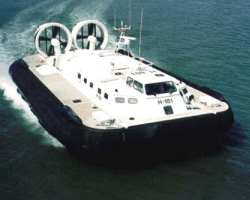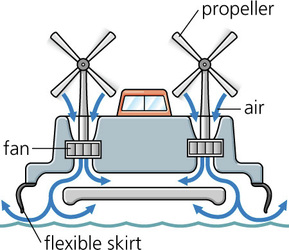Hover craft
hovercraft is a vehicle that is supported on a cushion of air. It is able to traverse many different types of terrain on land and can also travel on water.
Most of us think that the Hovercraft is going like a car but,Without lift, hovercrafts would be
useless. Propellers shoot air down at the surface of the water or the ground to lift the hovercraft a few inches. Hovercrafts use something called a skirt to hold air inside the area underneath the vehicle. The skirt must be the perfect length and weight otherwise air would escape from under the vehicle, and the hovercraft could hit the ground. I personally would not want to be on that hovercraft.
useless. Propellers shoot air down at the surface of the water or the ground to lift the hovercraft a few inches. Hovercrafts use something called a skirt to hold air inside the area underneath the vehicle. The skirt must be the perfect length and weight otherwise air would escape from under the vehicle, and the hovercraft could hit the ground. I personally would not want to be on that hovercraft.
Hovercrafts need a lot of power to turn all their propellers. In fact, they need two engines. One turns the propellers that make it lift off the ground. The other engine turns the propellers that push the vehicle in the direction it wants to go.
Hover crafts gain lot of advantages some of them are given below
- Police and Fire Department use
- Ice and water transportation
- Oil spill clean up
- Wildlife conservation and rescue
- Crop spraying
How do you think a hovercraft could help police and fire departments?
- To help them rescue people where a boat or car could not reach
- They are faster than police cars
- They are safe
History of hover craft
The hovercraft was invented in 1952 by the British inventor Sir Christopher Cockerell, who was knighted for his services to engineering in 1969. By simple experiments involving a vacuum cleaner motor and two cylindrical cans he proved the workable principle of a vehicle suspended on a cushion of air blown out under pressure, making the vehicle easily mobile over any surface. This would enable it to operate over soft mud, water, and marshes and swamps as well as on firm ground
The British aircraft manufacturer Saunders Roe developed the first practical man-carrying hovercraft, the SR-N1, which carried out several test programmes in 1959 to 1961 (the first public demonstration in 1959), including a cross-channel run. It was found that the craft's lift was improved by the addition of a 'skirt' of flexible fabric or rubber around the hovering surface, to contain the air.


